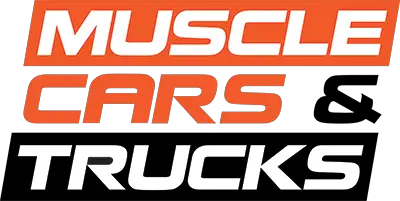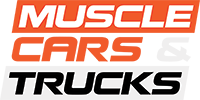We had a feeling that the Hemi V8 engine was an endangered species. But today a clearer picture is painted on just how endangered. Stellantis have announced details on the highly anticipated twin-turbo inline six engine that’s otherwise going to be known as the “Hurricane” (not Tornado). Internally known as the GME-T6 (Global Medium Engine Turbo-6), the Stellantis Hurricane engine was originally uncovered by USPTO patent illustrations back in 2017.
This new 3.0L TTI6 will come in two output versions at launch: Standard Output (SO): which will offer more than 400 horsepower and 450 lb-ft of torque. The Standard Output GME-T6 will utilize cooled exhaust gas circulation (EGR- which we see on modern diesel engines) and is calibrated for maximum fuel economy in its applications; 15 percent more fuel efficient than a V8, according the the automaker. The second variant is a High Output (HO) engine, and is expected to deliver over 500 horsepower and 475 lb-ft of torque, and promises to deliver “significant” fuel economy performance while performing duties such as towing.

Does this confirm an application for full-size trucks and SUVs like the Ram 1500 and Jeep Wagoneer? It’s hard not to see that happening. In fact, Stellantis confirms that the Hurricane twin-turbo I-6 is set to be the primary internal combustion power plant of the future in North America for vehicles using the STLA Large and STLA Frame platforms, which otherwise suggests that these architectures are more than just for electric vehicles.
As for the sensation of all that power, the GME-T6 Hurricane engine is expected to deliver “at least 90 percent” of peak torque from 2,350 rpm all the way to its red line. Production is already under way at the Stellantis Saltillo, Mexico engine plant, and the twin-turbo I6 will find itself in vehicles that will be in showrooms later this year.
With the new 3.0L Hurricane twin-turbo I-6 also comes a bit of streamlining. Stellantis confirms that it’s based on a modular engine architecture, and shares bore/stroke and cylinder spacing with the existing 2.0L turbocharged four cylinder, also nicknamed Hurricane. This engine can currently be found in multiple Jeep models, including the JL Wrangler, Wrangler 4xe, Cherokee and recently launched Grand Cherokee 4xe.

GME-T6 Hurricane Engine Highlights
Stellantis has shared the following information regarding the new GME-T6 Hurricane engine:
The foundation of the Hurricane twin-turbo is a deep-skirt cast-aluminum block with a structural aluminum alloy oil pan. Cross-bolted steel main bearing caps contain the strong rotating assembly of a forged steel crankshaft and forged steel connecting rods. During manufacturing the block is deck-plate honed to optimize the cylinder bore shape, which helps improve fuel efficiency.
Each turbocharger in the Hurricane twin-turbo I-6 feeds three cylinders. From a performance standpoint, two smaller turbochargers with less inertia spin up faster and deliver boost to the engine at lower rpm than a single, large turbo.
The compressed air passes through an engine-mounted water-to-air charge air cooler to reduce its temperature before entering the intake manifold. Cooler air is denser, enabling better performance via advanced ignition timing, and helping manage in-cylinder temperatures. An electric pump circulates coolant after the engine is shut down to help cool the turbocharger units for enhanced durability.
The high-pressure direct fuel injection system runs at 5,075 psi (350 bar) and uses injectors mounted centrally in the cylinder head combustion chamber. This design promotes finer atomization and super-fine control of fuel delivery into the cylinder for the optimum air/fuel mixture, enhanced by the turbocharged intake air, for higher power and lower emissions.
The Hurricane’s turbochargers are optimized for each version. The turbos on the Hurricane SO deliver peak boost of 22 psi, while the Hurricane HO turbos deliver 26 psi of peak boost.
Helping the Hurricane HO deliver its enhanced performance are lightweight, oil-jet cooled, forged aluminum pistons with an anodized top ring land and a diamond-like coating (DLC) on the pins to minimize friction. The Hurricane HO runs with a 9.5:1 compression ratio and uses 91 octane premium fuel.
With a focus on fuel economy, the Hurricane SO uses cast aluminum pistons with cast iron top ring land insert, running with a 10.4:1 compression ratio. It’s use of cooled EGR helps reduce engine pumping losses and manage in-cylinder temperatures. Premium fuel is recommended.
Tough Coating for the Cylinders
Less friction, reduced weight and unparalleled wear resistance from a thermal sprayed microstructure of metallic and oxide components that metallurgically transform are the key benefits of the PTWA coating inside the cylinders, an alternative to the traditional cast-in-place or pressed-in cast iron cylinder liners. The PTWA coating is ultra-thin, compared with 3 to 4 millimeters of a cast iron liner and has 10 times the wear resistance.Minimizing friction throughout the engine enhances its efficiency, reducing its emissions and fuel consumption.
The PTWA coating is applied to the Hurricane block during the manufacturing process at the Saltillo Engine Plant. The process, adapted from the aerospace industry, melts a steel alloy wire at 2,300 degrees Celsius (4,150 degrees Fahrenheit), producing microscopic particles sprayed onto the cylinder walls at high velocities, where the particles splat-cool to form the coating and form a physical bond to the aluminum cylinder bore. Honing the surface gives it a super-fine cross hatch pattern with controlled micro porosity for oil retention.
The PTWA spray process leaves more aluminum between the cylinders for better heat transfer and engine cooling. This enables propulsion engineers to optimize the air-fuel mixture and advance the ignition timing (spark) over a wide operating range, another mechanism to reduce carbon dioxide and other emissions.







2 Comments
Leave a Reply2 Pings & Trackbacks
Pingback:The 2023 Dodge Hornet R/T Packs A Serious Punch
Pingback:The 2023 Dodge Hornet GT Is The Fastest CUV For Under $30k